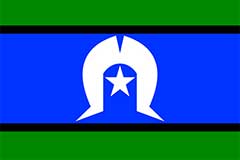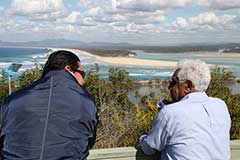The Australian Institute of Aboriginal and Torres Strait Islander Studies (AIATSIS) has been central to the development of Aboriginal and Torres Strait Islander studies as a distinctive, unique and substantial field of study in Australia incorporating disciplines such as anthropology, archaeology, art, health, education, linguistics and ethnomusicology.
AIATSIS commenced in 1961 with an interim Council. An Act of Parliament in 1964 established the Australian Institute of Aboriginal Studies (AIAS), with a twenty-two member, primarily academic, Council and a foundation membership of 100. The AIAS founding Principal was Frederick David McCarthy.
The first Aboriginal member of the AIAS council joined in 1970. The early work of the AIAS greatly increased interaction between scholars in different fields and laid the foundations of future collections and an extensive list of publications.
The AIAS Act was replaced by the Australian Institute of Aboriginal and Torres Strait Islander Studies Act (the Act) in 1989. The Act created a Research Advisory Committee and reduced the size of the Council to nine members. Members of the AIATSIS Council are now predominately Aboriginal or Torres Strait Islander, reflecting the diverse nature of contemporary Aboriginal and Torres Strait Islander cultures and issues. Scholars, both Aboriginal and Torres Strait Islander and non-Indigenous, continue to make an overwhelming contribution to AIATSIS' collections and knowledge.
AIATSIS relocated to the Acton Peninsula in 2001, heralding an exciting and challenging era. For the first time in the modern history of Australia an Aboriginal and Torres Strait Islander organisation received national prominence on a site of international importance and created the ability to showcase Aboriginal and Torres Strait Islander cultures and the richness of AIATSIS collections in a manner never before possible.
Our logo

The AIATSIS logo is derived from the boomerang totem of the Gu:na:ni (Kunjen) people from the Mitchell River region, Gulf of Carpentaria, North Queensland. The design is painted on a softwood shield purchased in the 1930s by the late Miss Ursula McConnel while she was carrying out research at Yarrabah, near Cairns. The shield was one of four fighting shields collected at the same time made by Malcolm, Claude and George Wilson who were residents in Yarrabah at the time.
The design consists of rows of white dots on a red ground at each end, then rows of black dots encircled by white. Between these end panels is a design in red, in which two opposed boomerangs are prominent. On each side are four solid circles in black, with sinuous lines of white dots running through them. The greater part of the shield bears a yellow ground colour. The design as a whole illustrates well the symmetrical style of north-eastern Queensland art, the symmetry being both lateral and longitudinal from the middle of the design.
The shield was adopted by the Council of the (then) Australian Institute of Aboriginal Studies in 1963. In January 2004 the ownership of the shield was transferred from the collection of the National Museum of Australia to the collection of AIATSIS.




